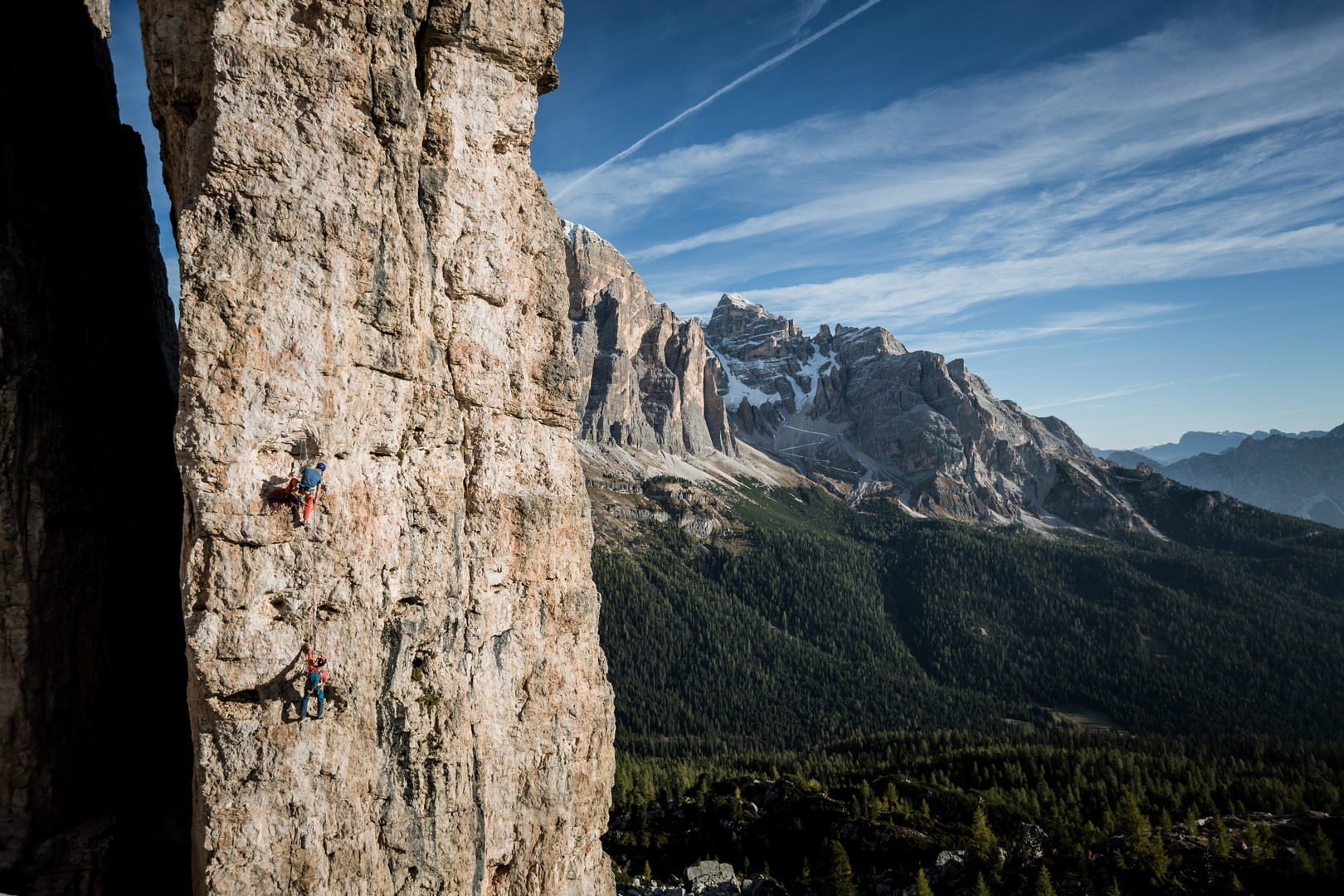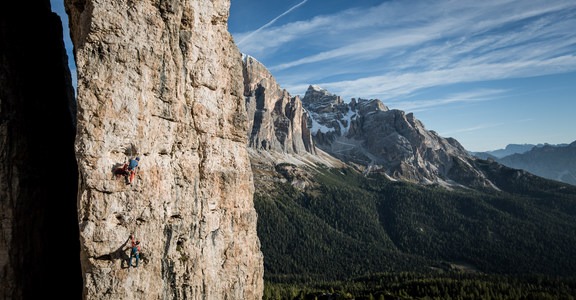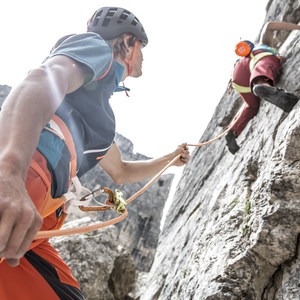Bivouacking on the mountain
If it’s planned or unplanned and the result of an emergency situation: There are some basic rules to observe when bivouacking in alpine terrain. This is the only way the rope team can protect themselves from hypothermia or other health hazards.
Bivouac site
The ideal place to bivouac is safe from hazards such as falling rocks and ice, avalanches, storms or falls. It also offers protection from the wind and sun and provides sufficient space for the rope team to lie down fully extended. In winter a snow cave can protect from the wind, in summer larger pines or trees can provide protection.
Setting up a bivouac
An insulating lower layer is extremely important because it protects from hypothermia. If you didn’t bring a mat, you can use the climbing rope, climbing equipment or backpack as a base layer.
Bivi bag
Bivi bags that provide space for two people are advantageous in an emergency situation. The climbers’ mutual body warmth can provide additional protection from hypothermia. A good bivi bag is water and dirt repellent and windproof thanks to a PU coating. An additional silver coating on the inside that reflects body heat is also helpful. In addition, bivi bags in a signal color can be spotted quicker by mountain search and rescue or other search parties!
Whether it’s a short climb or a multi-day high alpine climb, a bivi bag is a vital piece of equipment for every mountain climber. It is very versatile in emergency situations and offers protection from the cold and the elements.
Check out the full series of Safety Academy Lab Rock videos below:
- Alpine basics
- Basic equipment for every climber
- Basic equipment for groups
- Additional equipment for groups
- Storms in the mountains
- Types of rock in the Alps
- Tour planning for alpine climbing
- Packing a backpack correctly
- Rope team procedures
- Knot techniques
- Belay using bolts
- Belay methods
- Anchors
- Coiling a climbing rope
- Rappelling
- What to do in an alpine emergency
- First aid on the mountain
- Rescue techniques while alpine climbing
- Bivouacking in an emergency situation
Visit ORTOVOX’s Safety Academy Lab Rock to view the climbing tutorials in their totality and test your knowledge with their fun and interactive quizzes.
Since the company was founded in 1980 in the south of Munich, ORTOVOX has stood for the highest possible protection during alpine activities. As pioneers in the avalanche safety field, we have played a key role in the development of emergency equipment for the mountains. Innovations such as the double-frequency avalanche transceiver and Smart Antenna Technology, and also targeted training measures, continue to be valuable contributions to making mountain sports a little bit safer and to saving lives.






Comments
Sign In and share them.